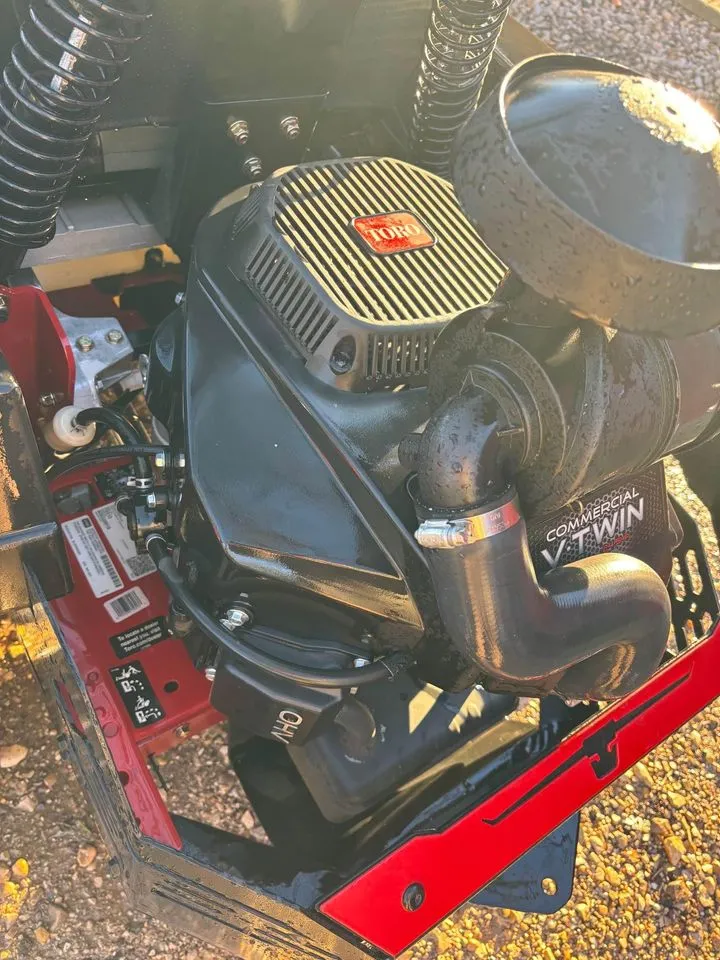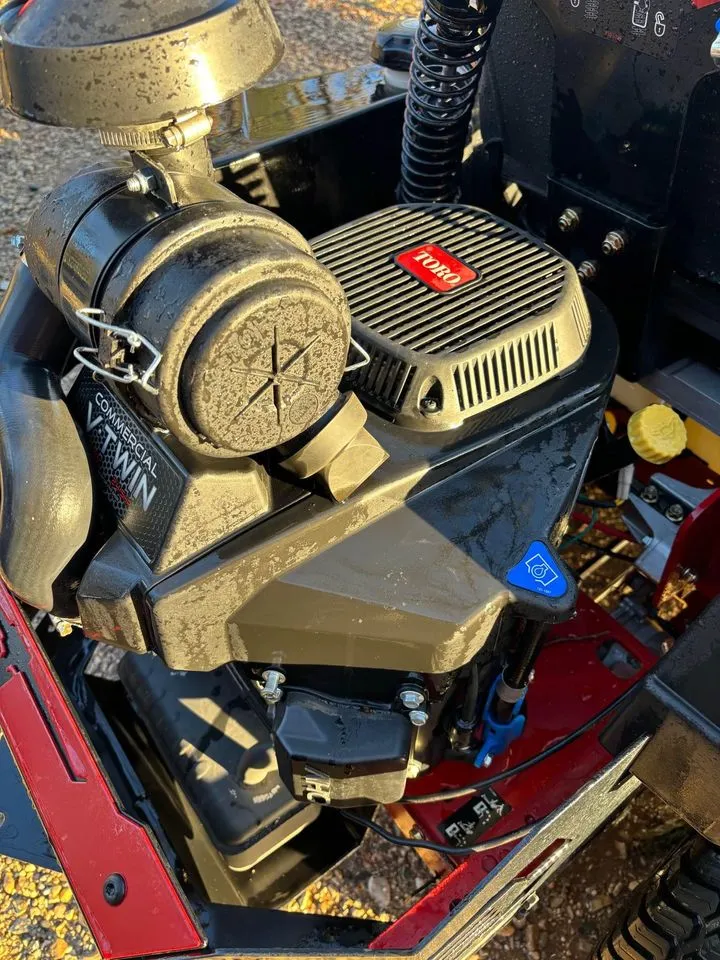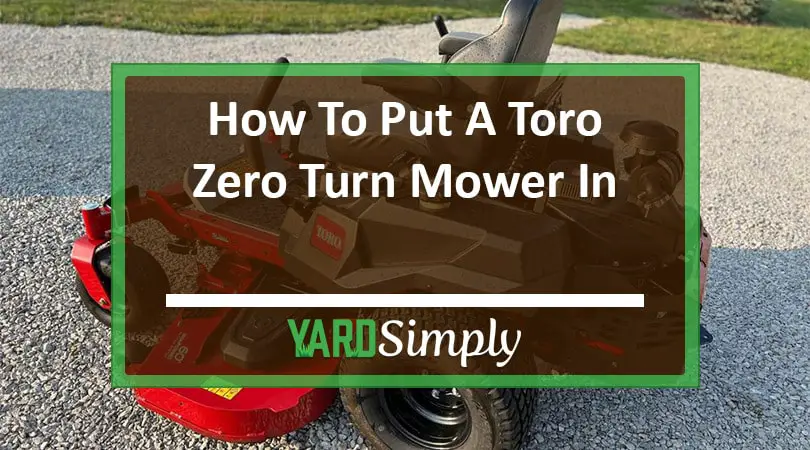Knowing how to put a Toro zero turn mower into neutral is essential for maintenance, towing, or when the engine won’t start.
Trust in my expertise to guide you through this process effectively, and read on to learn how to maneuver your Toro mower with confidence, even when it’s off.
With my extensive experience in operating and maintaining outdoor power equipment, I’ll provide you with clear, concise instructions to shift your Toro mower into neutral effortlessly.
Key Takeaways
- Locate the bypass levers at the rear of the mower.
- Disengage the transmission by shifting the bypass levers into the neutral position.
- Shift the mower into neutral by centering the steering levers and ensuring the parking brake is off.
- Secure the mower’s position by checking for obstacles and ensuring the parking brake is disengaged.
Why Won’t My Toro Zero Turn Move When I Push Manually
I’ve encountered a perplexing issue: my Toro zero turn mower won’t budge when I attempt to push it manually, despite my efforts to engage the neutral mode. At first, I was baffled, but I’ve come to realize there could be several reasons for this.
One possibility is that the bypass lever, which disengages the transmission, isn’t fully engaged. I’ve checked this lever, located at the rear of the mower, to ensure it’s in the correct position for manual movement.
However, even with the lever set correctly, the mower may still resist my push if there’s hydraulic pressure built up in the system. I’ve learned that to release this pressure, I should move the drive levers back and forth a few times.
I’ve also considered that the brakes could be sticking, or there might be an obstruction in the drive system. After a quick inspection, I’d rule out any visible blockages or brake issues.
If all these checks don’t resolve the problem, I’m likely facing a more complex mechanical fault, such as a seized transmission pump, which would need a professional’s touch.
It seems I’ve got a bit more troubleshooting to do before I can get my mower moving again.
Manually Pushing Your Toro Zero Turn Mower
Sometimes I find myself needing to push my Toro zero turn mower without starting it.
I’ve learned that the first step is to locate the bypass levers to disengage the transmission.
Once I shift it into neutral and secure its position, I’m ready to push the mower safely to where it needs to go.
Locate Bypass Levers
Locating these levers is straightforward once you know where to look. On my model, the bypass levers are situated at the rear of the mower, near the wheel area. To access them, I simply have to kneel down and reach towards the back.
They’re typically small metal rods or levers, clearly marked and designed to be pulled or pushed with minimal effort. Engaging these levers allows the mower’s wheels to roll freely, making it easy to push around whenever necessary.
Disengage Transmission

Next, I locate the bypass levers behind the mower or near the rear wheels. On my model, there’s one for each drive wheel. I push them outward to the neutral position, which releases the transmission so the mower can roll freely.
Now, I’m ready to push my mower to where it needs to go. It’s important to remember to re-engage the transmission before mowing again, or it won’t respond to the controls.
Shift Into Neutral
I find the neutral position on my Toro zero turn mower by gently moving the steering levers to the center. It’s crucial that they’re lined up precisely; otherwise, the mower won’t roll freely.
Once I’ve got them centered, I make sure to check the parking brake to see that it’s not engaged.
With the parking brake off and the levers in the neutral position, I can now push the mower smoothly without any resistance.
It’s pretty straightforward once you get the hang of it, and it makes moving the mower around without starting the engine a breeze.
Secure Mower Position
Once I’ve positioned the mower’s steering levers in neutral, it’s essential to ensure the area is clear and it’s safe to push the mower to its new spot. I always double-check for obstacles that could obstruct the path or cause an accident.
I’m mindful of inclines or slippery surfaces which could make the task riskier than it needs to be.
Before I start pushing, I make sure the parking brake is disengaged. This prevents unnecessary resistance and potential damage to the brake system. I grip the handles firmly, brace myself, and then I begin to push with steady, controlled force.
It’s important not to rush this process; moving the mower slowly maintains stability and prevents any sudden jolts or movements that could lead to loss of control or injury.
Push Mower Safely
Although the mower is now in neutral, I’m careful to push it gently, avoiding any abrupt movements that could cause it to tip or become unmanageable.
I check the area around me to make sure there’s a clear path, free of obstacles that could trip me up or damage the mower.
I’m mindful of my own safety, keeping a firm grip on the mower’s handles and using my legs, not just my back, to push. This way, I can control the mower’s speed and direction with precision.
It’s important to remember to unlock the wheels, if necessary, as some models have a manual lock that could prevent rolling.
Prepping Your Toro Zero Turn for Manual Pushing
Before I can safely push my Toro zero turn mower manually, I’ve got to get it ready by following a few critical steps.
First, I’ll need to locate the bypass levers to disengage the transmission, ensuring the machine won’t resist my efforts.
Then, I’ll engage the parking brake and shift the mower into neutral, checking the hydraulic release to make sure everything’s set.
Locate Bypass Levers
Here’s how I do it:
I start by ensuring the mower is on a flat, stable surface to prevent it from rolling away. Then, I locate the bypass levers – small metal rods or levers – behind the machine, near the base of the engine.
With a firm grip, I pull the levers outwards to the bypass position. This disconnects the drive system, allowing the wheels to turn freely.
Now, I’m able to push my mower to wherever it needs to go without any hassle.
Disengage Transmission
I make sure the mower is on level ground and the engine is off. I then move to the rear of the mower and locate the bypass levers near the rear wheels.
I pull the levers outwards to the bypass position; this action disconnects the drive system. Now, the mower’s wheels can roll freely.
It’s essential to ensure that both levers are fully engaged in the bypass mode. Only then can I safely push the mower without causing any harm to the transmission.
Engage Parking Brake
Once the bypass levers are set, I engage the mower’s parking brake to ensure it stays stationary while I prepare for manual pushing. This step is vital; it’s the only thing keeping my Toro zero turn from rolling away when I’m not in the driver’s seat.
I locate the parking brake lever — it’s usually found near the mower’s seat or dashboard. With a firm grip and a steady motion, I push or pull the lever into the engaged position, often indicated by a clear sign or a click sound.
I double-check to make sure the brake is fully engaged. I can’t afford any mishaps due to a mower that’s not securely parked. Once I’m certain it’s set, I’m ready to move on to the next step.
Shift to Neutral
Then, I push the levers outward to the neutral position. It’s important to do this for both levers to ensure the mower will move smoothly.
Once I’ve shifted to neutral, I double-check that the levers are fully engaged in the correct position. This guarantees that I won’t encounter resistance or cause damage when I push the mower manually.
Now, my Toro is ready to be moved without powering it on.
Check Hydraulic Release
This step is crucial because it disengages the hydraulic pumps, allowing the wheels to roll freely.
I locate the hydraulic release levers near the rear of the mower or consult the owner’s manual if I’m unsure of their position.
I carefully move them into the release position, which is typically indicated by the symbol of a padlock in an open state.
Once I’ve done this, I give the mower a gentle nudge to make sure it rolls without resistance. If it does, then I know I’ve successfully prepped my mower for pushing without damaging the hydraulics.
Related: How to Change Hydraulic Fluid in Zero Turn Mower
Manually Pushing Down a Slope
Now, I’ll tackle the tricky part of moving a Toro zero turn mower down a slope manually.
It’s crucial to know your slope safety measures and ensure the bypass levers are engaged before you start.
I’ll guide you through a controlled descent technique to safely navigate this challenge without mishap.
Slope Safety Measures
Before manually pushing my Toro zero turn mower down a slope, I ensure the machine’s transmission is in neutral to prevent any damage to its internal components. It’s crucial to check that the parking brake is disengaged, too.
I always inspect the hill for obstacles – twigs, rocks, or wet patches that could cause a slip. I wear sturdy boots with good grip and stand to the side of the mower, not directly behind it, to avoid being in its path if it starts to roll uncontrollably.
I use both hands to guide the mower, applying steady pressure and taking small steps to maintain balance. If the slope is too steep, I’ll reconsider the task altogether—safety always comes first.
Engage Bypass Levers

These levers are crucial for moving the mower manually, especially when I need to navigate tricky terrain without powering the machine. I find these bypass levers, often located at the rear of the mower, near the wheel area.
I ensure the engine is off and the parking brake is engaged before I proceed. Then, I firmly pull the levers outwards to the bypass position. This disengages the transmission, freeing the wheels.
Once the levers are set, I’m ready to carefully push the mower down the slope, guiding it to ensure it doesn’t roll away uncontrolled.
Controlled Descent Technique
I carefully control the mower’s descent by applying even pressure on the handlebars, ensuring it moves steadily and doesn’t slip out of my grip as I navigate the slope.
It’s crucial to maintain a firm stance, with my feet planted securely on the ground, to counterbalance the weight of the mower. I’m always mindful of the slope’s gradient; too steep, and I risk losing control.
I avoid any jerky movements or sudden stops that could cause the mower to tip or roll.
With each careful step, I guide the mower down, keeping the pace slow and deliberate. It’s about finesse, not force, to safely reach the bottom without any mishaps.
Once I’m on level ground again, I take a moment to ensure everything’s in order before continuing with my work.
Tips and Tricks to Ensure Your Safety
Before we discuss the specifics, let’s acknowledge that safety should always be our top priority when handling a zero turn mower.
I’ll share essential tips, such as avoiding unlevel ground that can tip the mower, the importance of using the parking brake, and being cautious around a hot mower to prevent burns.
These precautions are simple but vital in preventing accidents and ensuring a safe mowing experience.
Learn More: Danger of Zero Turn Mowers: Unveiling the Hidden Facts
Unlevel Ground
Navigating a Toro zero turn mower on unlevel ground requires understanding its neutral positioning to maintain control and ensure my safety. When I’m on a slope, I take extra care to avoid sudden turns which could cause the mower to tip.
I always move slowly, giving myself time to react to any shifts in the terrain. If I need to stop, I ensure I’m on the flattest area possible before shifting the mower into neutral.
I’m mindful that the mower’s weight distribution can be unpredictable on uneven surfaces, so I avoid steep inclines whenever possible. If a slope is unavoidable, I tackle it head-on, moving up or down rather than across, to minimize the risk of rolling over.
Safety’s always my top priority.
Using the Parking Brake
Consistently engaging the parking brake on my Toro zero turn mower is crucial for preventing unwanted movement when I’ve placed the machine in neutral.
I make sure to always set the brake firmly before stepping off the mower, even if I’m on level ground. It’s a simple yet vital habit that ensures the mower stays put, preventing potential accidents or damage.
To set the parking brake effectively, I press down on the brake lever or pedal, depending on my mower’s model, until it’s fully engaged. I double-check that it’s secure by gently trying to push the mower.
If it doesn’t budge, I know I’ve done it right. This extra precaution gives me peace of mind, knowing that my safety isn’t compromised.
Hot Mower
After ensuring the parking brake is set, I’m cautious to let my Toro zero turn mower cool down before performing any maintenance or inspections, as a hot mower can pose significant safety risks.
The engine and exhaust system reach high temperatures during operation, which can lead to burns if touched. I always give it at least a few minutes to cool off.
While waiting, I use the time to gather my tools and review the mower’s manual for any specific maintenance tips.
Once I’m confident that the engine isn’t too hot to touch, I carefully check the mower for any debris or damage. It’s a simple step, but it’s crucial for my safety and the longevity of the mower.
Conclusion
In concluding, I’ve realized that mastering the neutral shift on my favorite Toro zero turn mower isn’t as intimidating as it first seemed.
Each time I’ve maneuvered my mower, particularly down tricky slopes, I’ve made sure to keep a steady grip and proceed at a cautious pace. It’s comforting to know I can do this without harming the mower’s hydraulics.
From locating the bypass levers to carefully descending slopes, these steps have become second nature to me. I hope my experience and the tips I’ve shared empower you to handle your mower with equal confidence and care.
Remember, the key is to always prioritize safety and take your time. Happy mowing, and enjoy the satisfaction of skillfully maintaining your machine!
Frequently Asked Questions
What is the correct procedure for putting a Toro zero turn mower in neutral?
This question often seeks detailed, step-by-step instructions for shifting a Toro zero turn mower into neutral, including locating and using bypass levers, and ensuring the mower is properly prepared for maintenance or manual movement.
Where are the bypass levers located on a Toro zero turn mower?
Users frequently ask about the specific location of bypass levers on their Toro zero turn mower, as these levers are essential for disengaging the transmission and enabling the mower to be put into neutral.
Can I push my Toro zero turn mower manually when it’s in neutral?
This question addresses the possibility and the proper method of manually pushing a Toro zero turn mower when it is in neutral, focusing on the necessary precautions and techniques for doing so safely.
Why won’t my Toro zero turn mower move even though it’s in neutral?
Users often inquire about issues related to their mower not moving despite being put in neutral, seeking troubleshooting tips for situations where the mower seems to be stuck or resisting manual movement.
How do I ensure my safety when putting my Toro zero turn mower in neutral and moving it?
Safety concerns are a common topic, with users asking for advice on how to safely disengage the mower’s transmission, precautions to take when working on uneven terrain, and general safety tips for handling the mower during this process.


